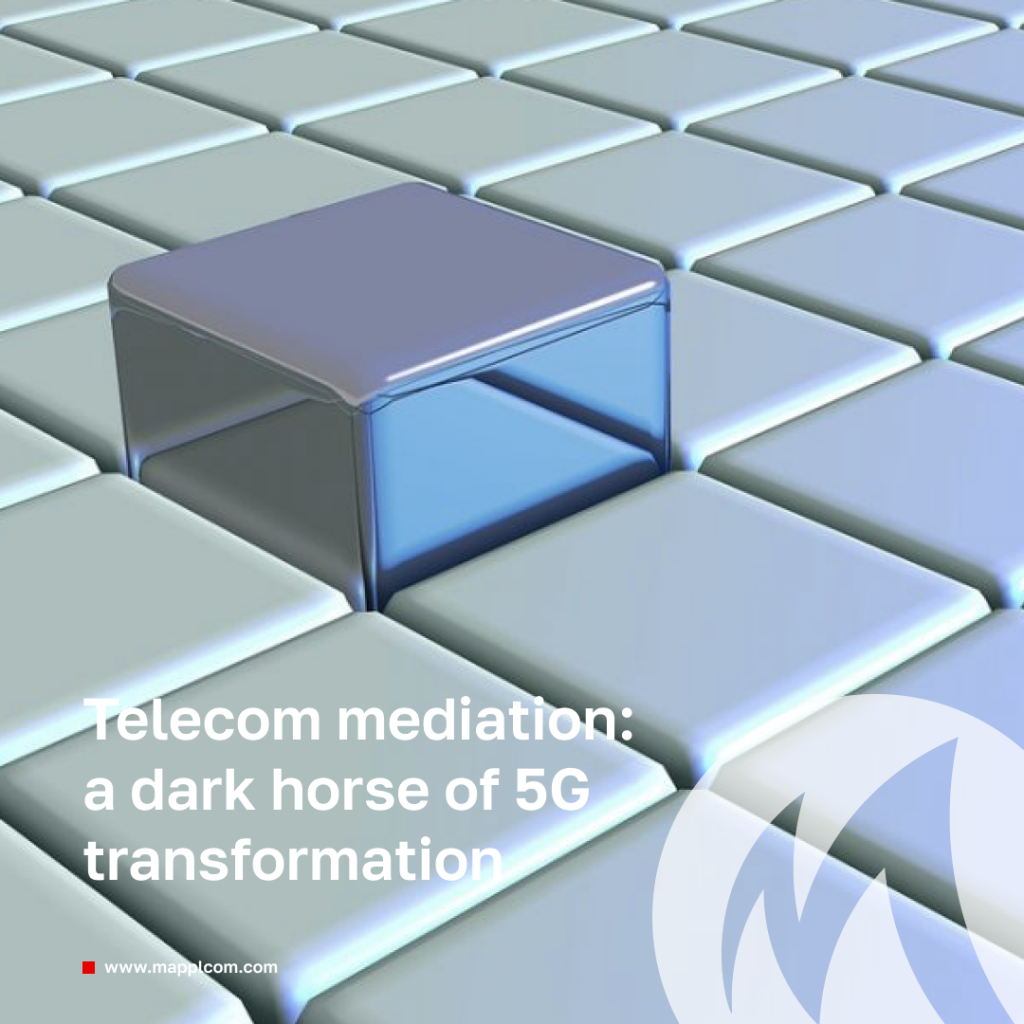Telecom mediation: a dark horse of 5G transformation or nothing really exceptional

Probably being in a list of the most lasting technologies in the sphere of telecom services, telecom mediation has encountered and co-existed with a wide range of different solutions and concepts: online and offline, mobile and fixed networks, voice communication and numerous text messages and an enormous number of records. Now mediation is about to face another demanding challenge: cutting-edge Internet of Things and 5G networks. Can we expect a new symbiosis or are we going to catch the end of telecom mediation era?
To create a representative metaphor for understanding the idea of how this technology works, we can imagine that in some sense the mechanism is similar to a way a theater crew is working behind the curtains when some theater performance is on the stage. Even during the most exciting shows someone has to deal with the spotlights and light, arrange the layout and move the scenery, care about costumes and attributes, manage the people and supply actors with what they might need for a brilliant play to let them perform in the most efficient way. Similarly, in the world of telecom services the cast mainly consists of “big starts” who either owns financial resources or handles huge client base with their ‘subscriptions and payments’ information, as well as data on services consumption, assurances, billing and comprehensive analytics. And in a very similar to any theatre model, they would have never reached this result if they hadn’t been accompanied by ones who are always in charge for indispensable online and offline data collection, preparation, accumulation, aggregation, transformation, adaptation and distribution. All these actions sound line a vital part of the process, don’t they?
Thereby, mediation platforms always act as intermediary between data providers (or more specifically, generators) from one side and data consumers from another. The system of telecom mediation itself is in charge of filtering relevant data from odd “noise”, listing the partial data records, aggregating and gathering them together, combining required information pieces and transforming the data to an appropriate format which is needed for the end-users. Earlier, mediation tended to be mainly applied for collecting raw information – CDRs (or call data records) thorough data from fixed network switches, arranging them to distribute then to billing and payment services’ providers usually being used to charge their clients. Even simpler, to send a batch of files from any location to another destination, the only thing needed was FTP (or file transfer protocol).
All the following generations of networks increased the number of CDRs in the process and made data records themselves more complicated as a range of new services was introduced every time requiring more and more enhanced tools. Simultaneously, the platforms encountered a respective growth in digital clients and users generally. To eliminate risks and create more customized services, a number of procedures included performance monitoring, fraud detection, service assurance, business intelligence and big data and analytics. Finally, a higher speed of decisions was required to face the customers’ needs. All this depended on power of mediation platforms to arrange elements between Operations and Business Support Systems (OSS/BSS).
With the emergence of 5G, telecom mediation platforms are going to be responsible for even a higher number of more complex tasks with strict requirements. The technology of mediation has to be constantly evolving in order to still be a demanded tool which enables great ‘theatre performances”.

